Abstract
1. In anaesthetized cats under artificial ventilation, a few milligrams of pentobarbitone sodium injected into the cerebral ventricles produced a pronounced fall in arterial blood pressure, which was central in origin and resulted from inhibition of vasomotor tone.
2. Pentobarbitone sodium was more effective in lowering blood pressure when injected into the cerebral ventricles than when injected into the cisterna magna, yet the pentobarbitone sodium did not act on structures in the ventricular wall, but acted on structures reached from the subarachnoid space.
3. To produce its vasodepressor effect, the pentobarbitone sodium had to pass through the foramina of Luschka into the subarachmoid space beneath the medulla oblongata and to penetrate its ventral surface in a region caudal to the trapezoid bodies and lateral to the pyramids. This was the outcome of experiments in which the pentobarbitone sodium was injected into or perfused through the cerebral ventricles with or without an outflow cannula inserted into the aqueduct or into the fourth ventricle, and of experiments in which pentobarbitone sodium solutions were applied by means of Perspex rings to this region of the exposed ventral surface of the medulla. Whereas the application of pentobarbitone sodium to this region on one side had a weak vasodepressor effect only, its application on both sides produced a pronounced fall in arterial blood pressure.
4. The region where pentobarbitone acted on topical application covers the region where nerve cells are found in the marginal glia immediately under the pia mater. The possibility is discussed that these cells are the morphological substrate on which the pentobarbitone acts, that arterial blood pressure is maintained by their activity which is suppressed by the pentobarbitone sodium.
Full text
PDF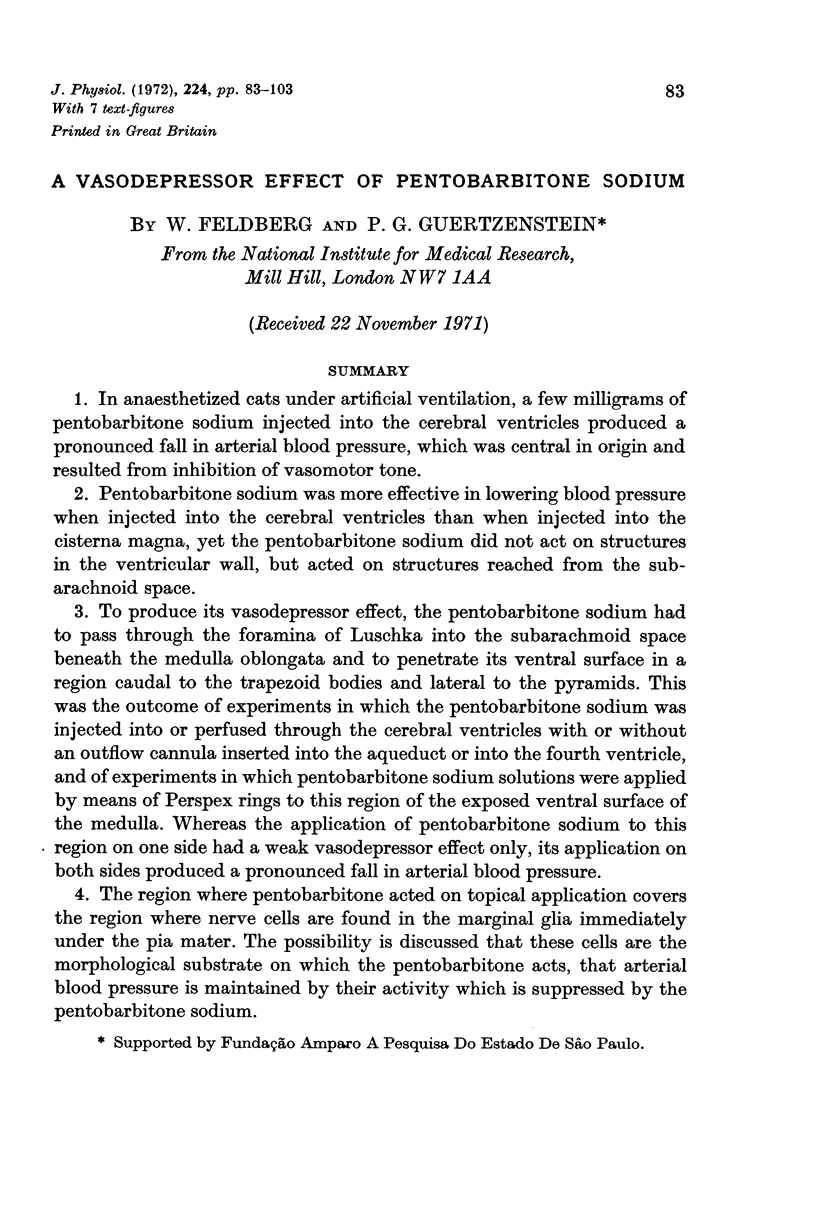
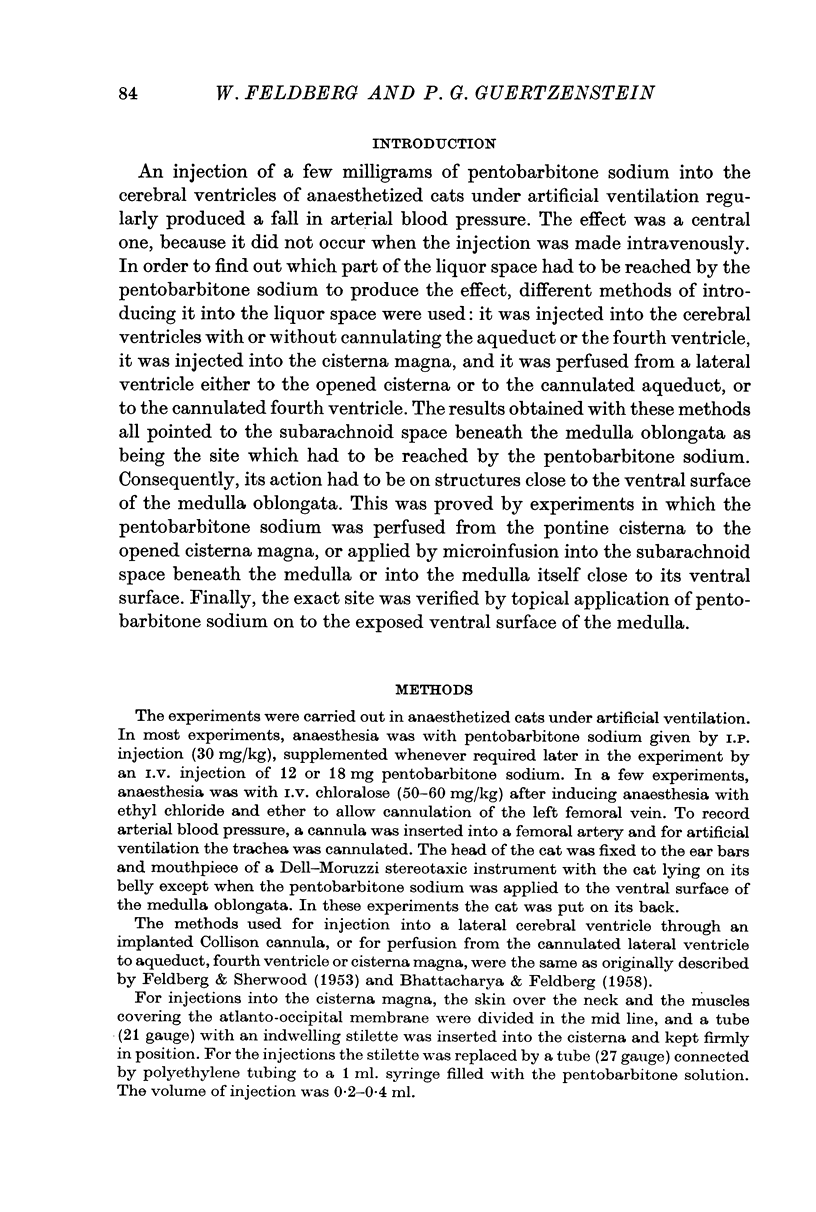
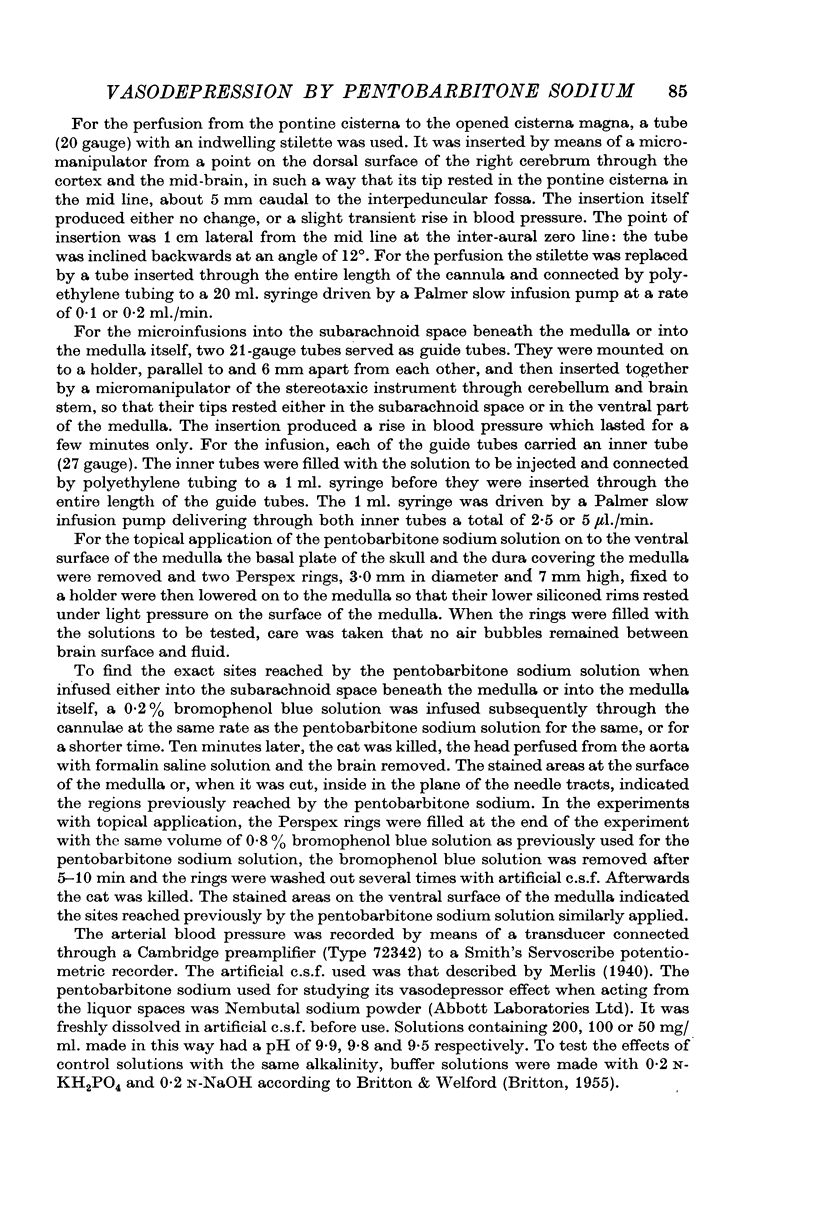
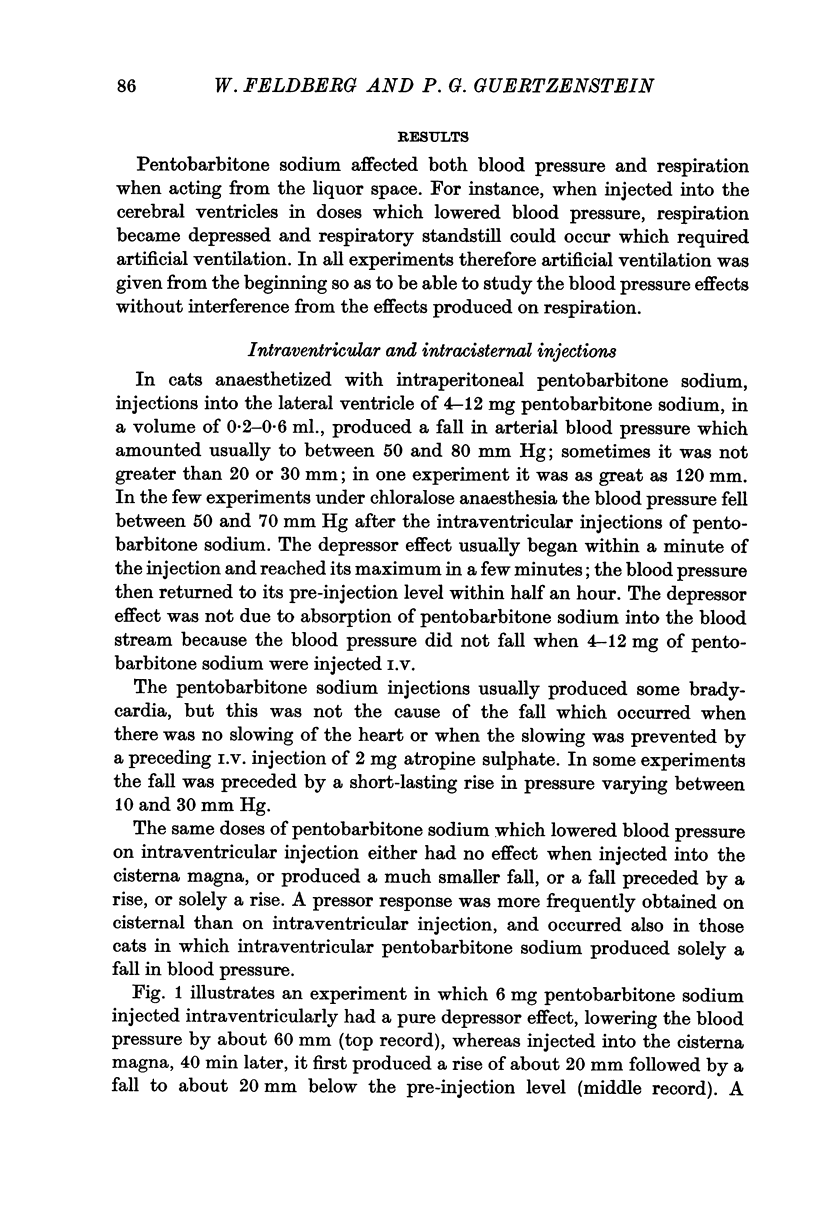
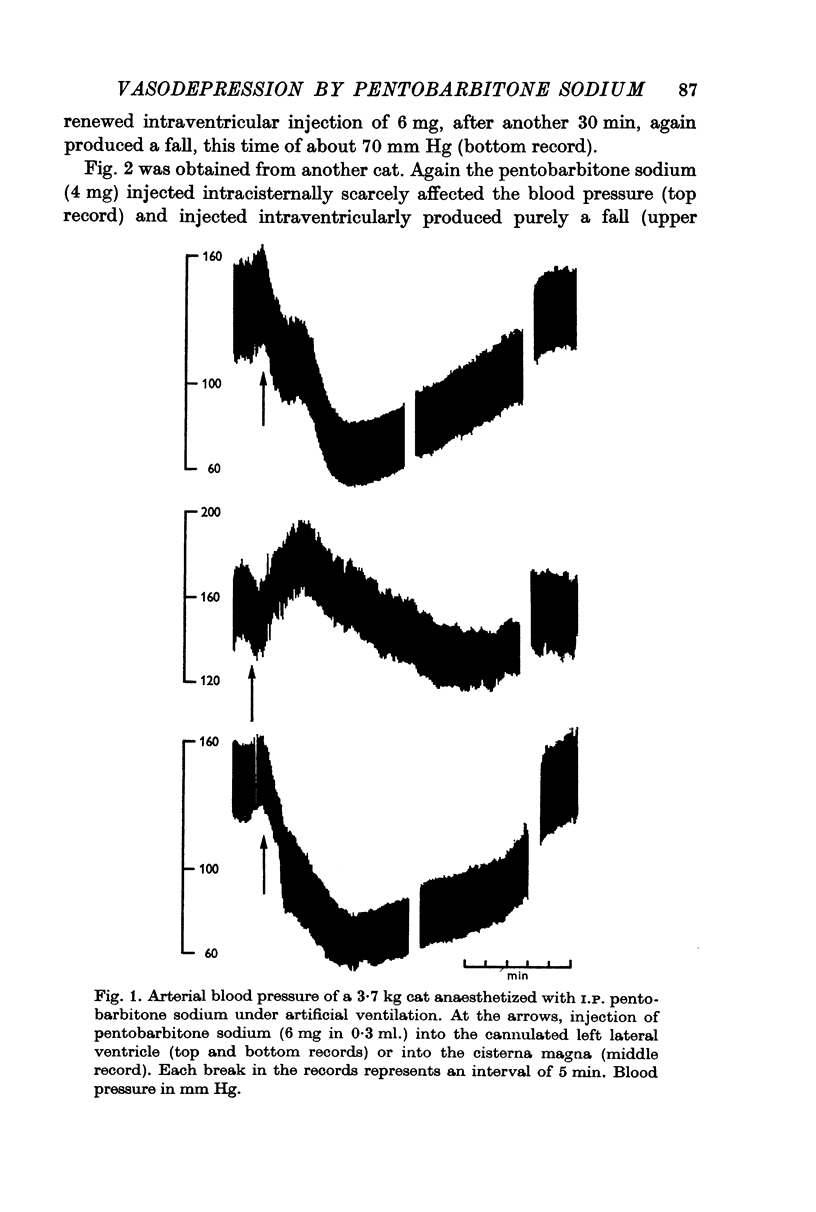
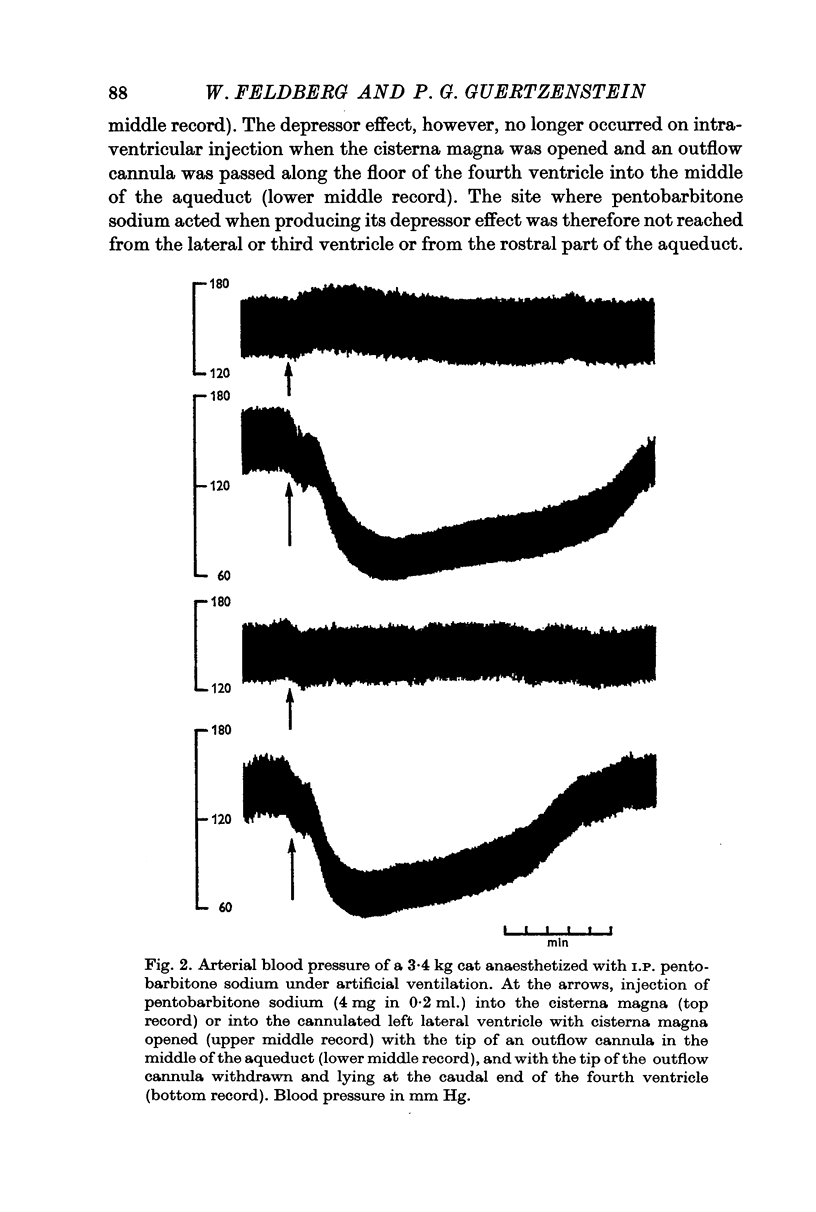
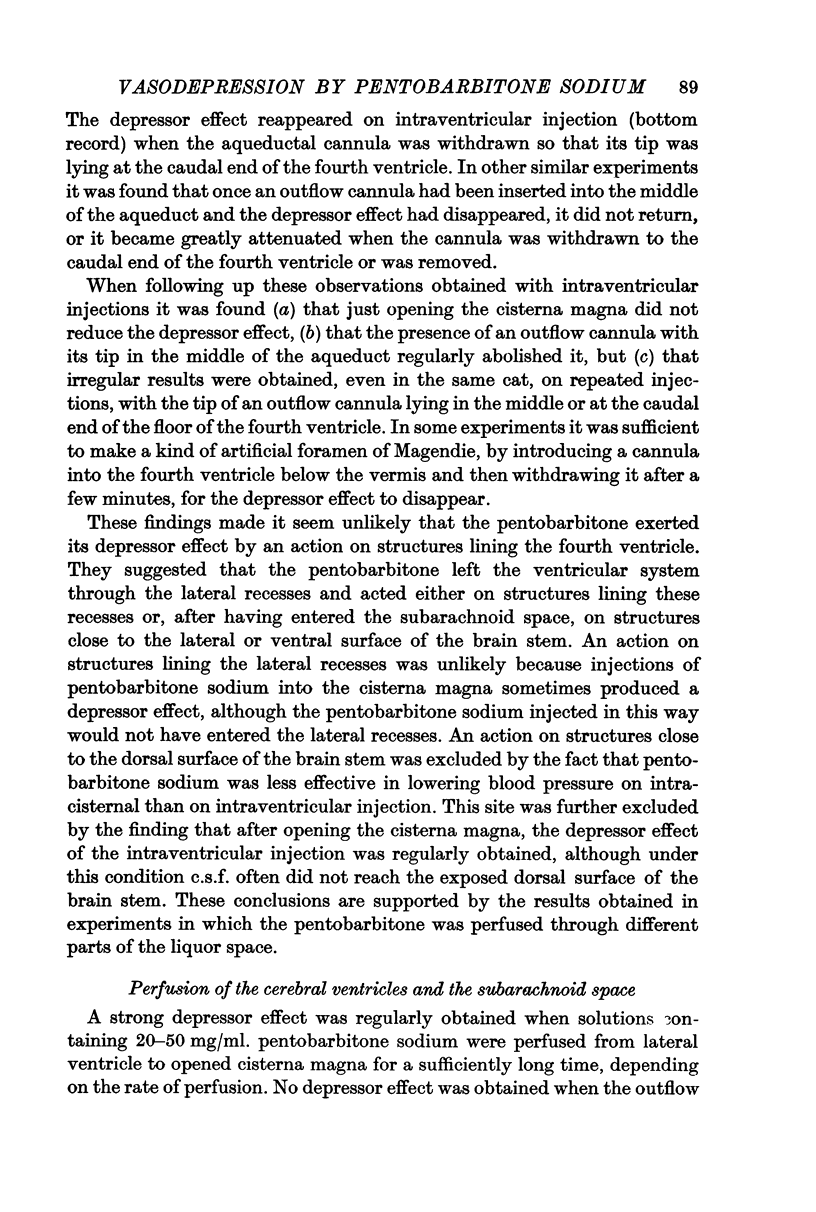
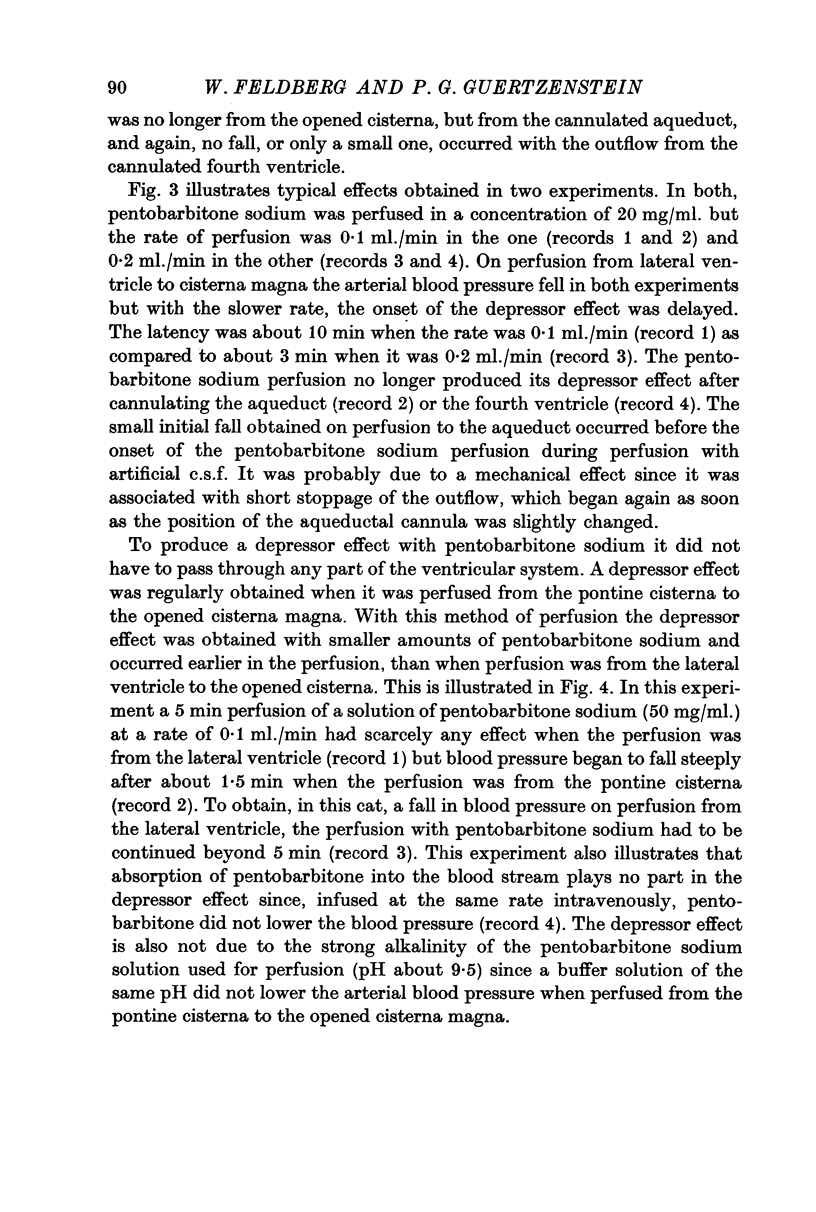
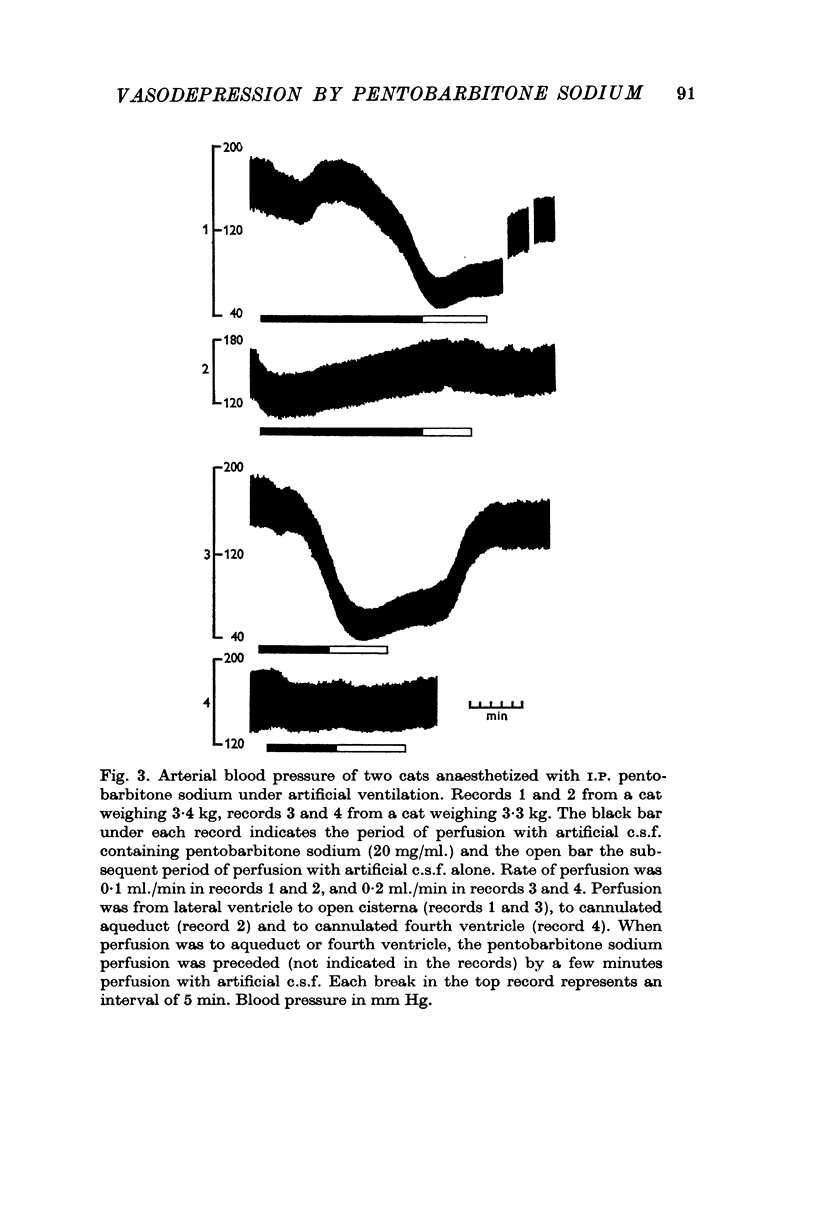
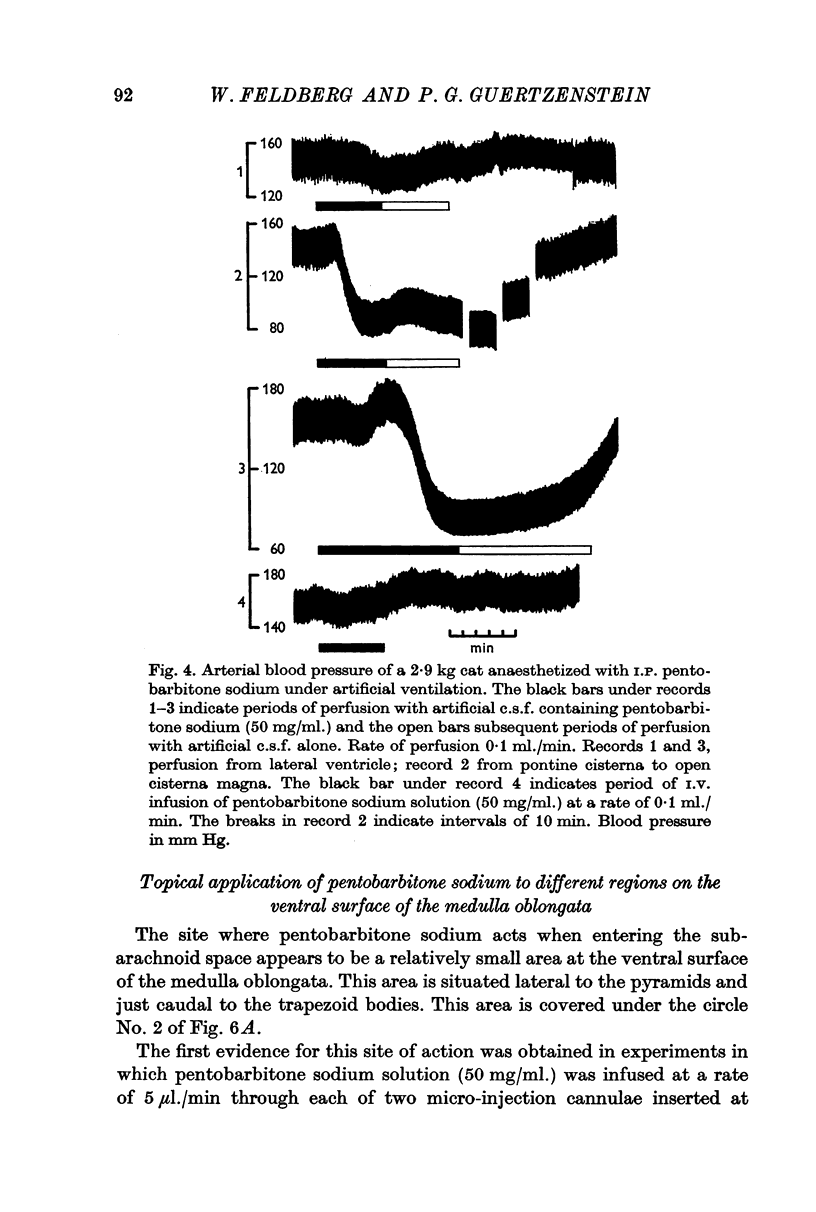
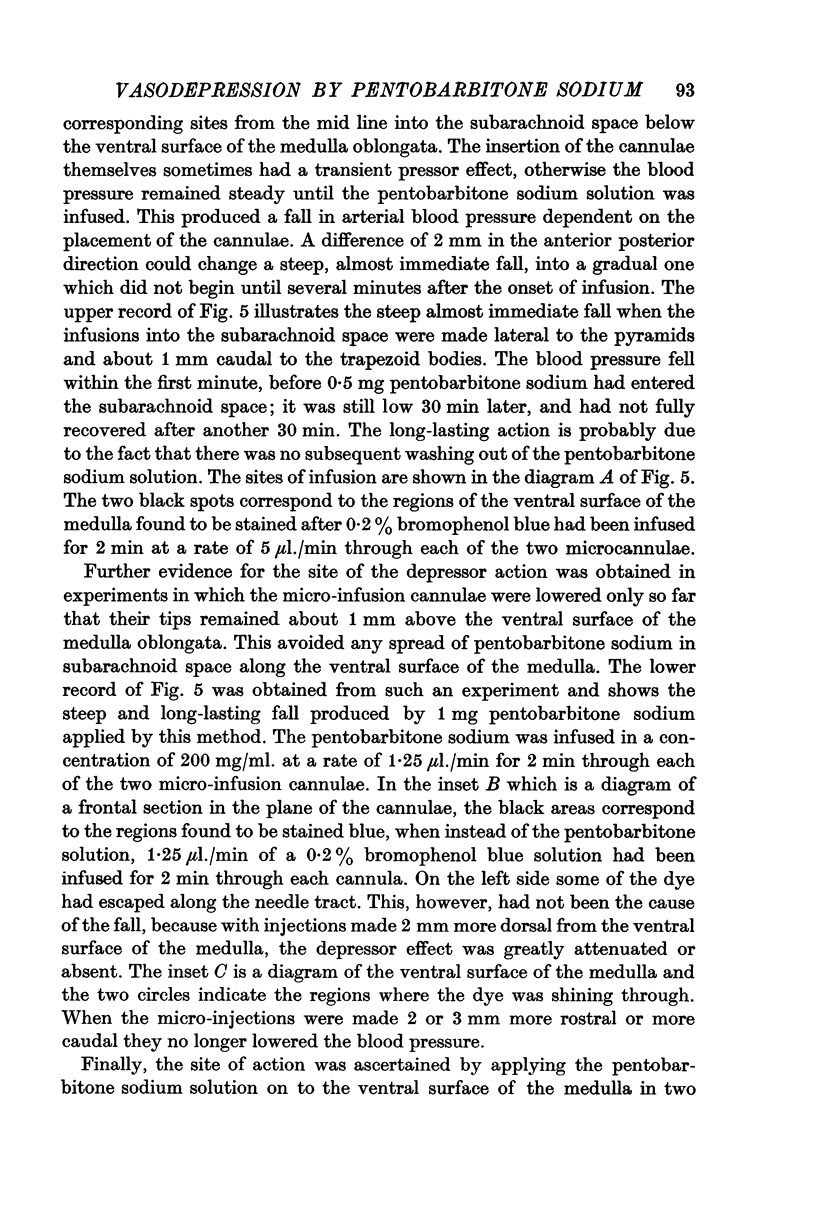
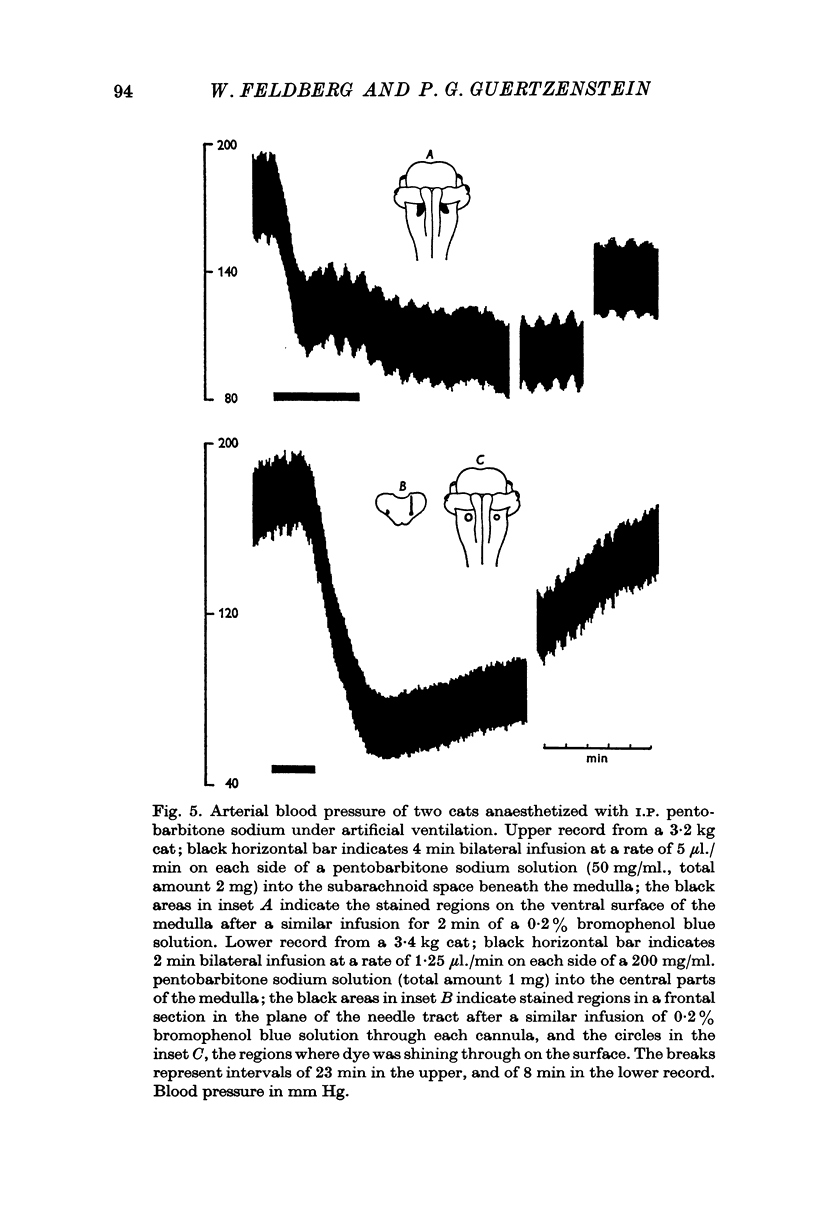
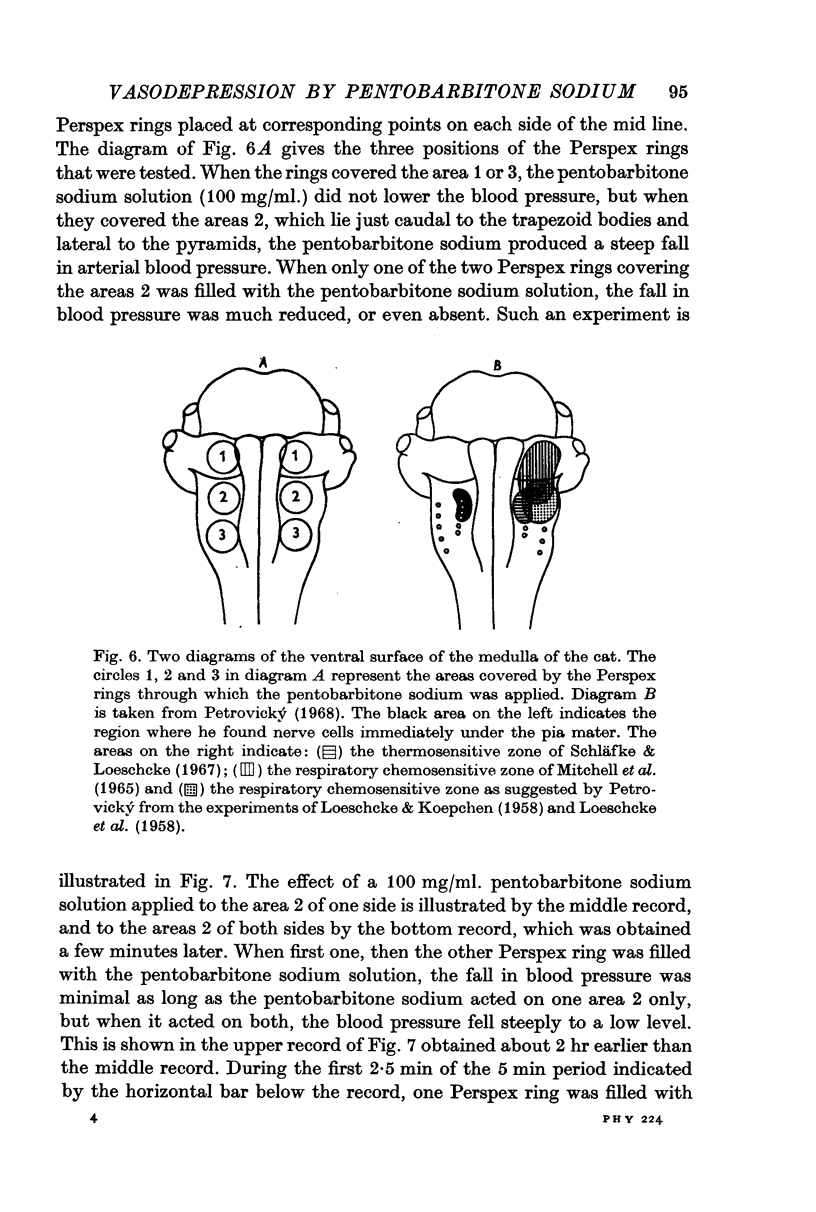
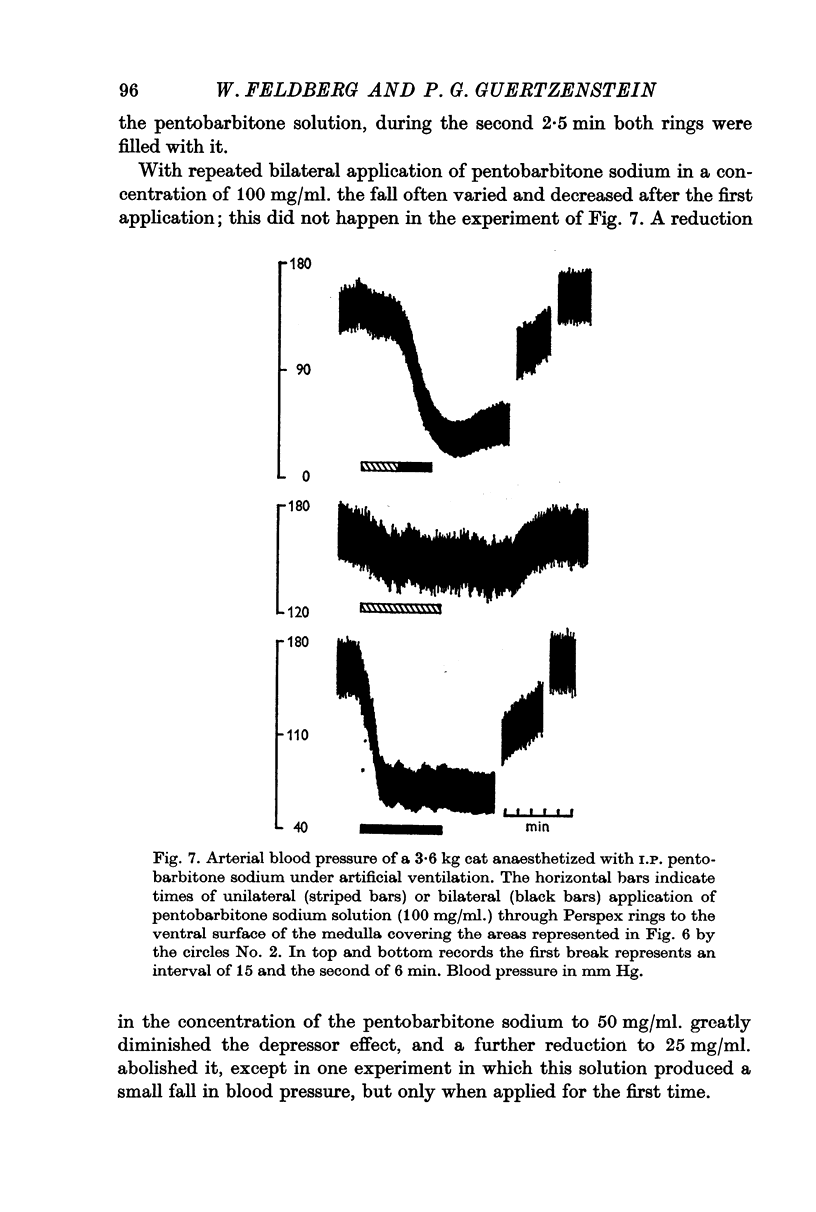
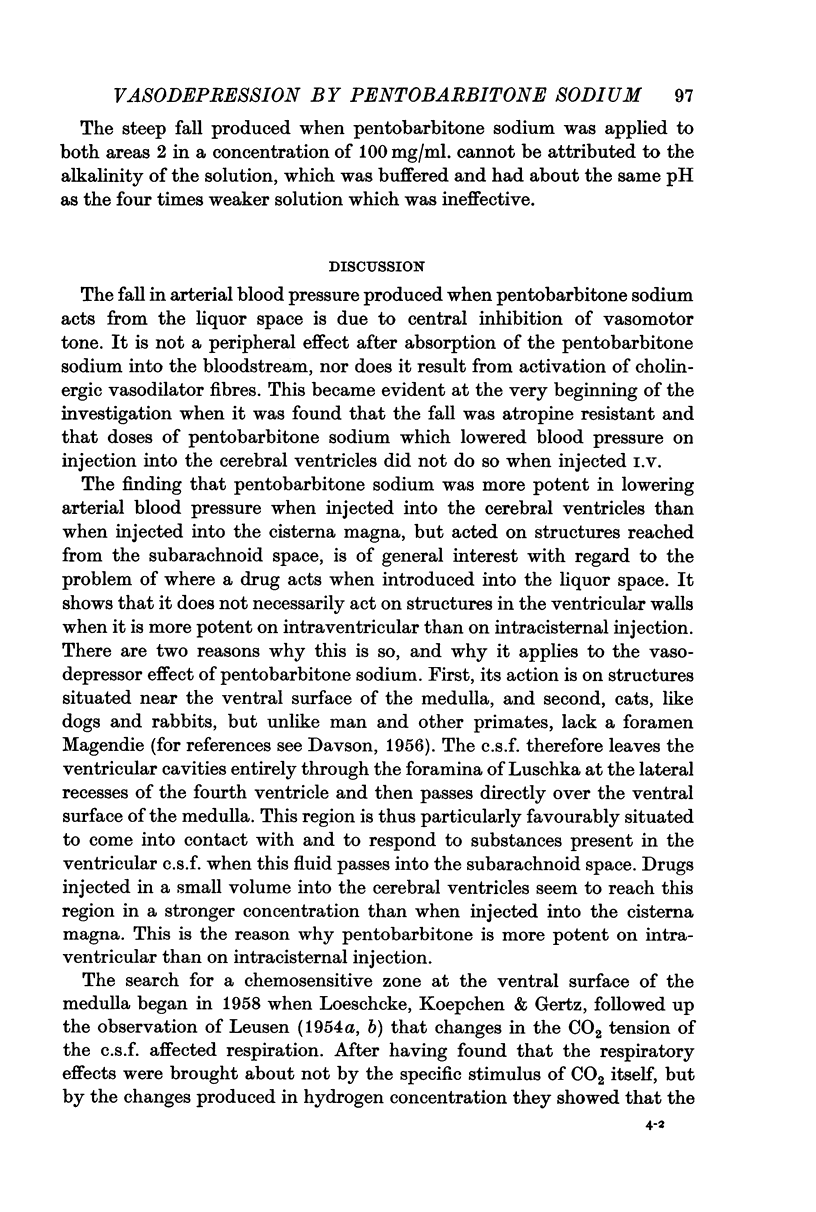
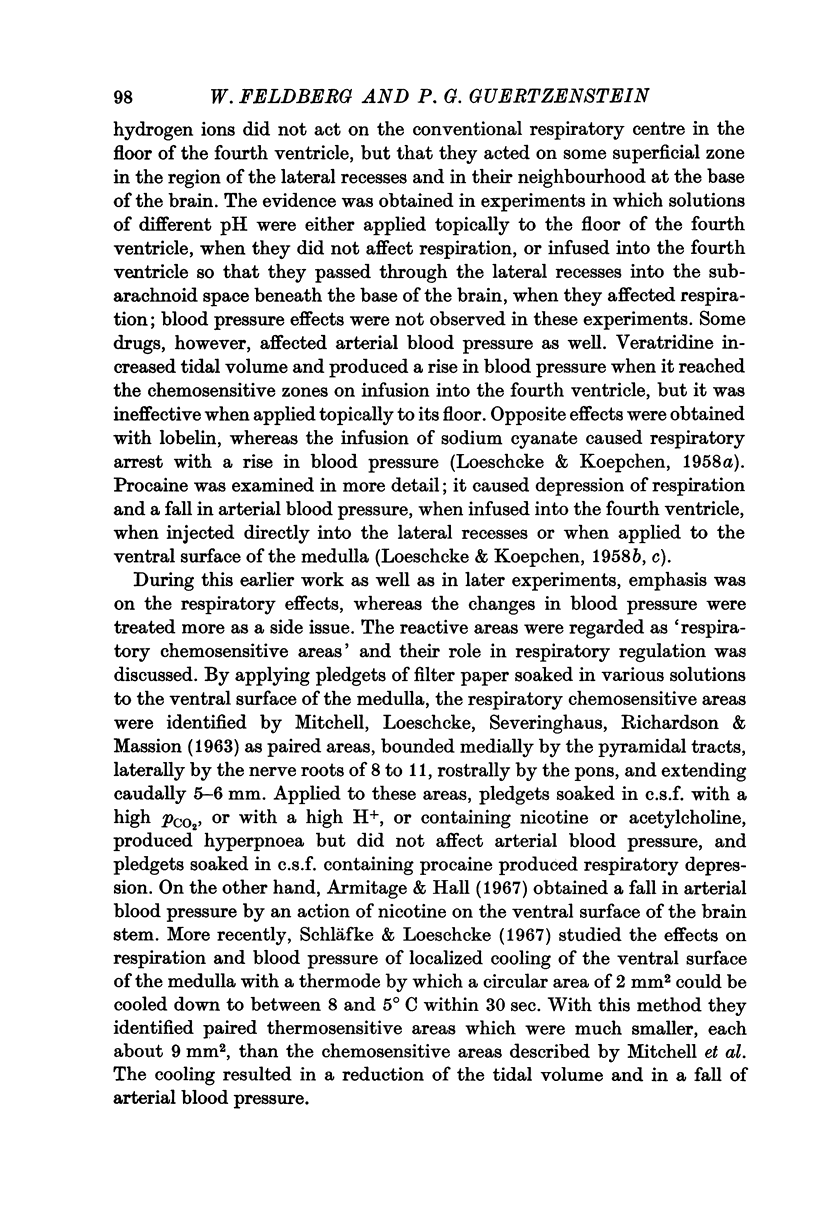
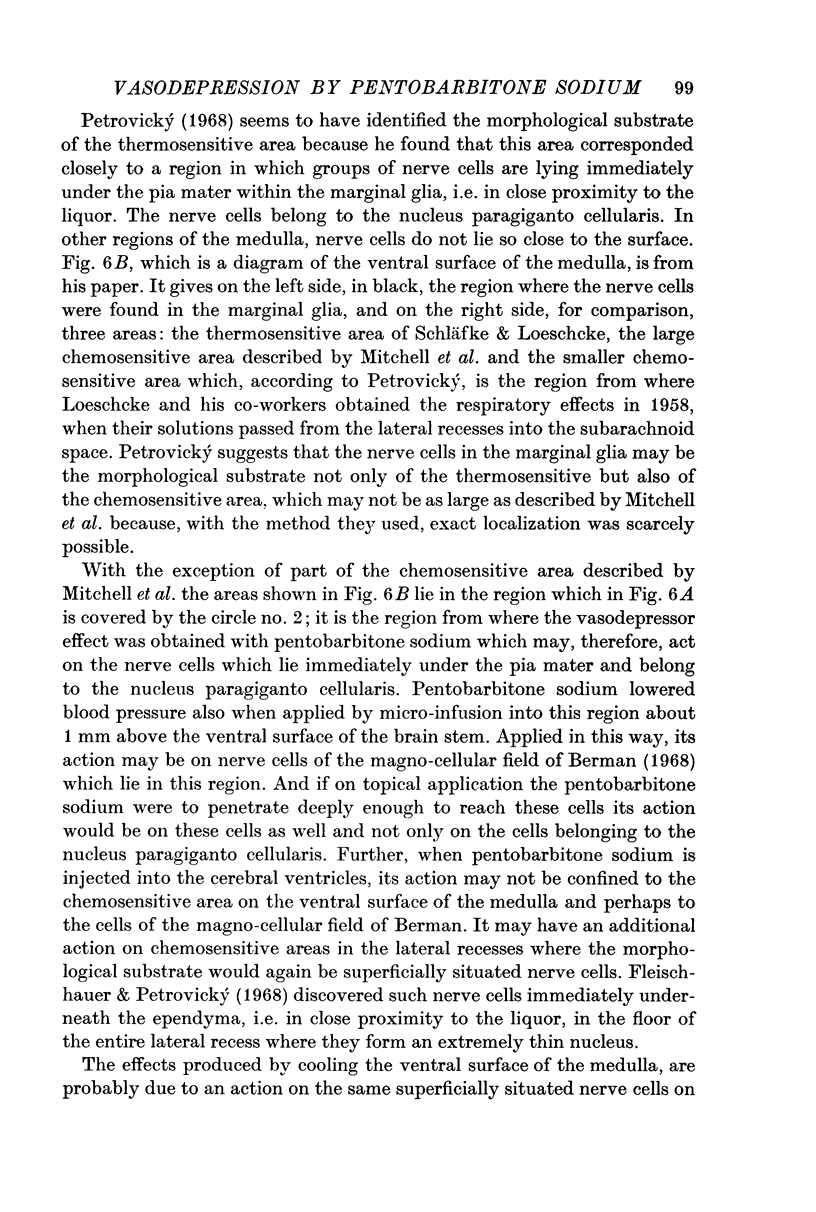
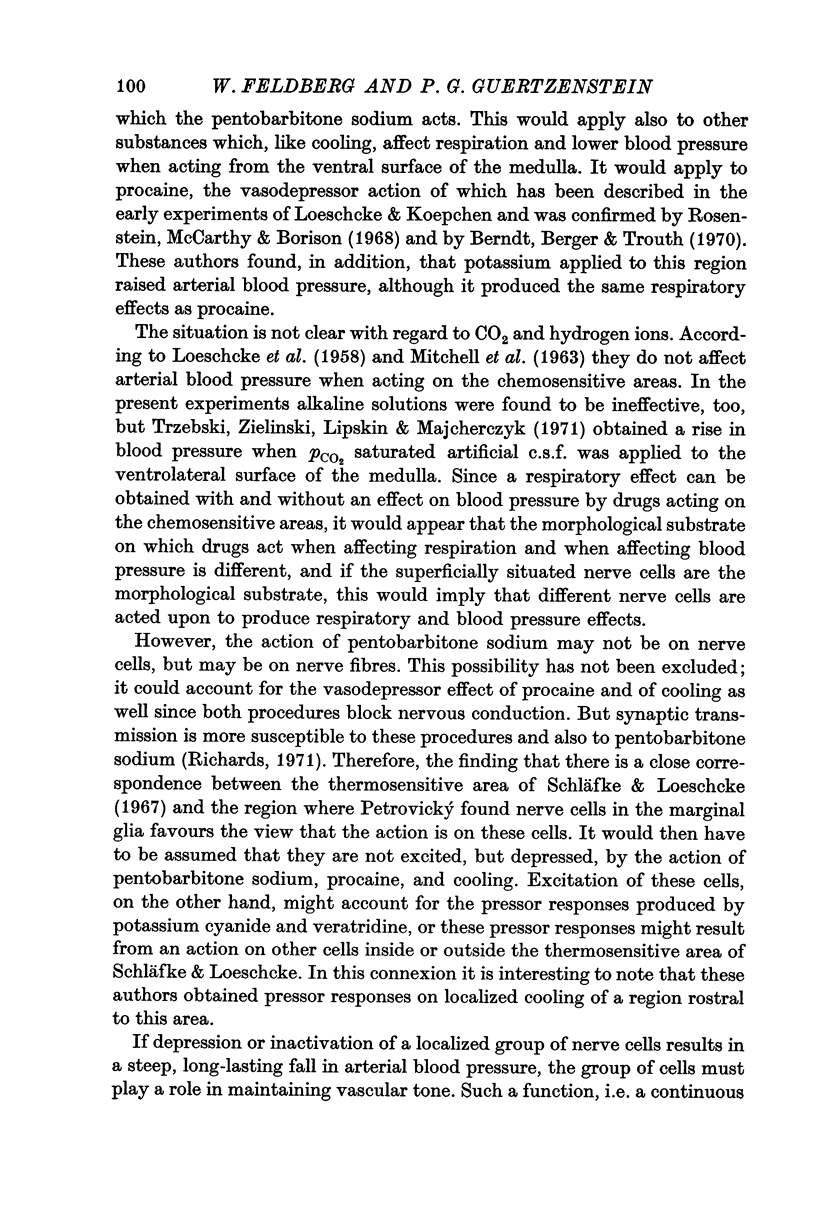
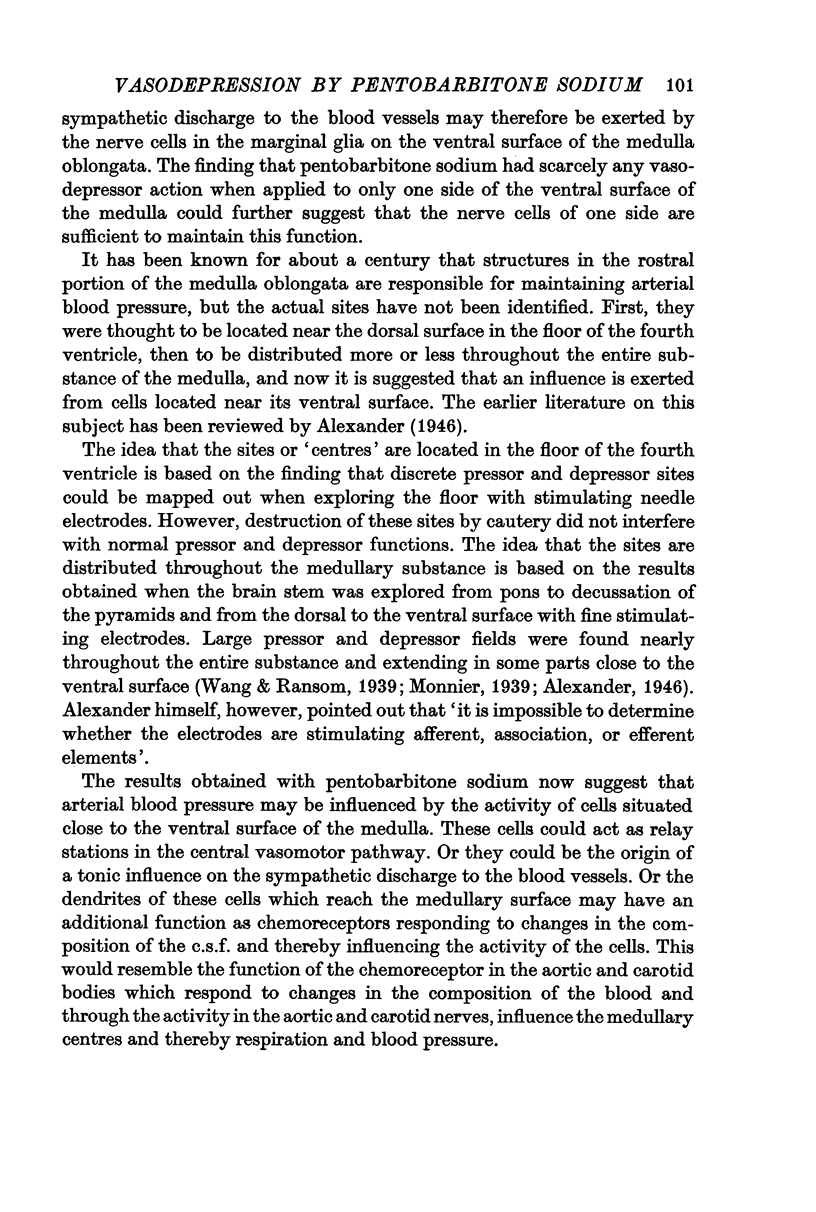
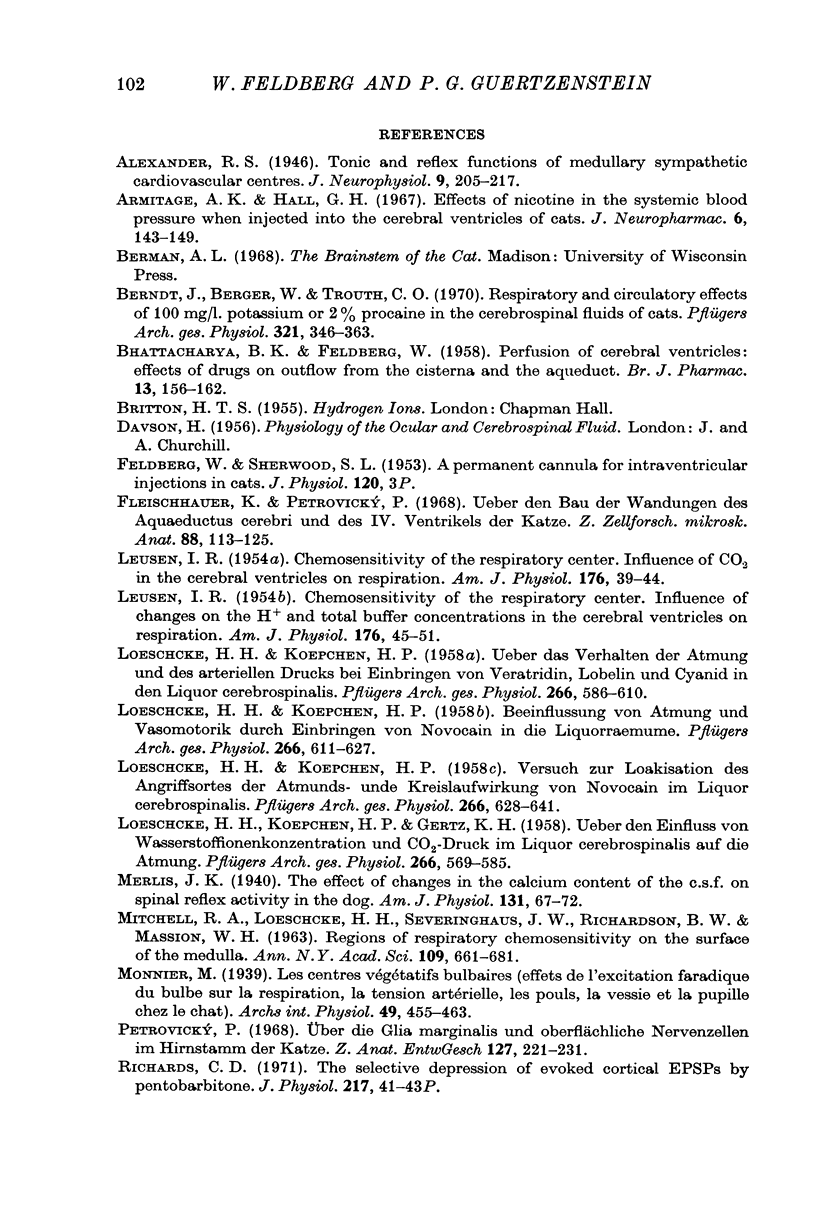
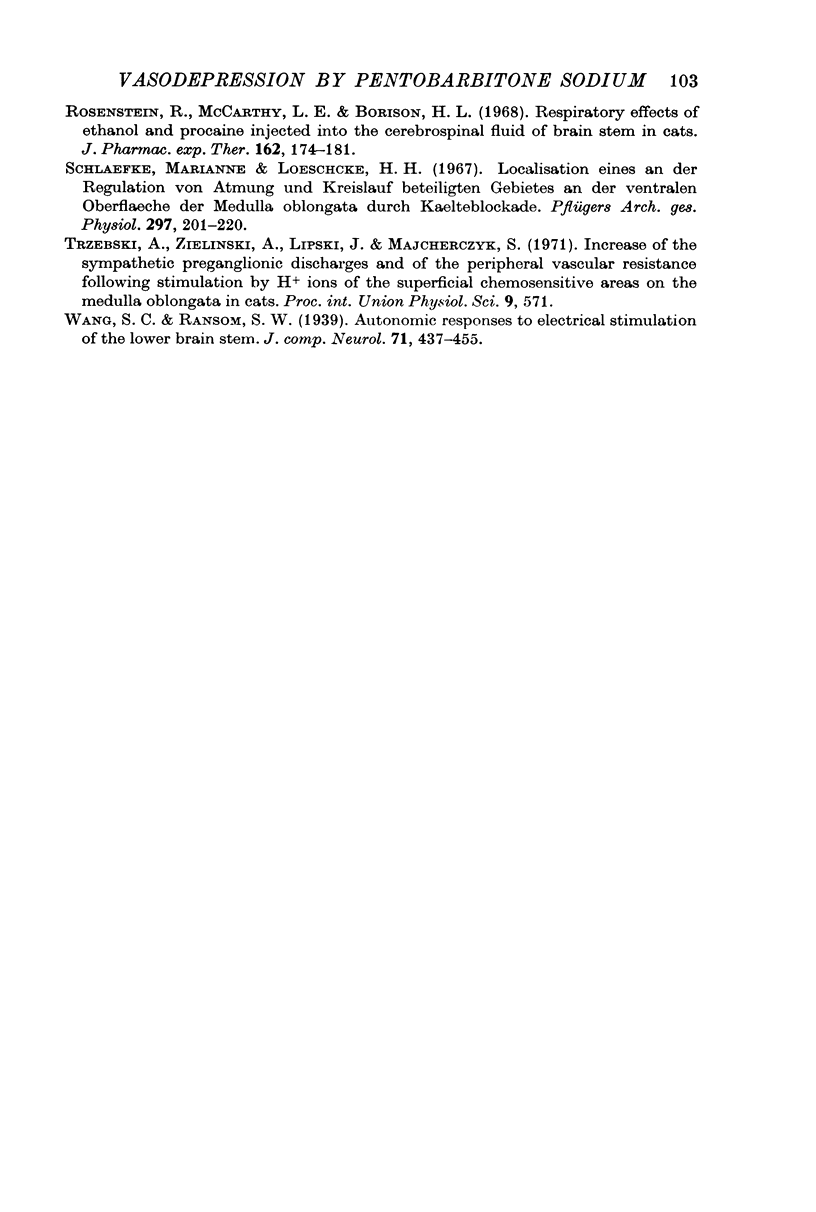
Selected References
These references are in PubMed. This may not be the complete list of references from this article.
- BHATTACHARYA B. K., FELDBERG W. Perfusion of cerebral ventricles: effects of drugs on outflow from the cisterna and the aqueduct. Br J Pharmacol Chemother. 1958 Jun;13(2):156–162. doi: 10.1111/j.1476-5381.1958.tb00211.x. [DOI] [PMC free article] [PubMed] [Google Scholar]
- Berndt J., Berger W., Trouth C. O. Respiratory and circulatory effects of 100 meq-l potassium or 2 per cent procaine in the cerebrospinal fluid of cats. Pflugers Arch. 1970;321(4):346–363. doi: 10.1007/BF00588648. [DOI] [PubMed] [Google Scholar]
- FELDBERG W., SHERWOOD S. L. A permanent cannula for intraventricular injections in cats. J Physiol. 1953 Apr 28;120(1-2):3P–5P. [PubMed] [Google Scholar]
- Fleischhauer K., Petrovický P. Uber den Bau der Wandungen des Aquaeductus cerebri und des IV. Ventrikels der Katze. Z Zellforsch Mikrosk Anat. 1968 May 2;88(1):113–125. [PubMed] [Google Scholar]
- LEUSEN I. R. Chemosensitivity of the respiratory center influence of changes in the H+ and total buffer concentrations in the cerebral ventricles on respiration. Am J Physiol. 1954 Jan;176(1):45–51. doi: 10.1152/ajplegacy.1953.176.1.45. [DOI] [PubMed] [Google Scholar]
- LEUSEN I. R. Chemosensitivity of the respiratory center; influence of CO2 in the cerebral ventricles on respiration. Am J Physiol. 1954 Jan;176(1):39–44. doi: 10.1152/ajplegacy.1953.176.1.39. [DOI] [PubMed] [Google Scholar]
- LOESCHCKE H. H., KOEPCHEN H. P. Beeinflussung von Atmung und Vasomotorik durch Einbringen von Novocain in die Liquorräume. Pflugers Arch. 1958;266(6):611–627. doi: 10.1007/BF00363038. [DOI] [PubMed] [Google Scholar]
- LOESCHCKE H. H., KOEPCHEN H. P., GERTZ K. H. Uber den Einfluss von Wasserstoffionenkonzentration und CO2-Druck im Liquor cerebrospinalis auf die Atmung. Pflugers Arch. 1958;266(6):569–585. doi: 10.1007/BF00363036. [DOI] [PubMed] [Google Scholar]
- LOESCHCKE H. H., KOEPCHEN H. P. Uber das Verhalten der Atmung und des arteriellen Drucks bei Einbringen von Veratridin, Lobelin und Cyanid in den Liquor cerebrospinalis. Pflugers Arch. 1958;266(6):586–610. doi: 10.1007/BF00363037. [DOI] [PubMed] [Google Scholar]
- LOESCHCKE H. H., KOEPCHEN H. P. Versuche zur Lokalisation des Angriffsortes der Atmung- und Kreislaufwirkung von Novocain im Liquor cerebrospinalis. Pflugers Arch. 1958;266(6):628–641. doi: 10.1007/BF00363039. [DOI] [PubMed] [Google Scholar]
- Petrovický P. Uber die Glia marginalis und oberglächliche Nervenzellen im Hirmstamm der Katze. Z Anat Entwicklungsgesch. 1968 Nov 4;127(3):221–231. [PubMed] [Google Scholar]
- Richards C. D. The selective depression of evoked cortical EPSPs by pentobarbitone. J Physiol. 1971;217 (Suppl):41P–43P. [PubMed] [Google Scholar]
- Rosenstein R., McCarthy L. E., Borison H. L. Respiratory effects of ethanol and procaine injected into the cerebrospinal fluid of the brainstem in cats. J Pharmacol Exp Ther. 1968 Jul;162(1):174–181. [PubMed] [Google Scholar]


